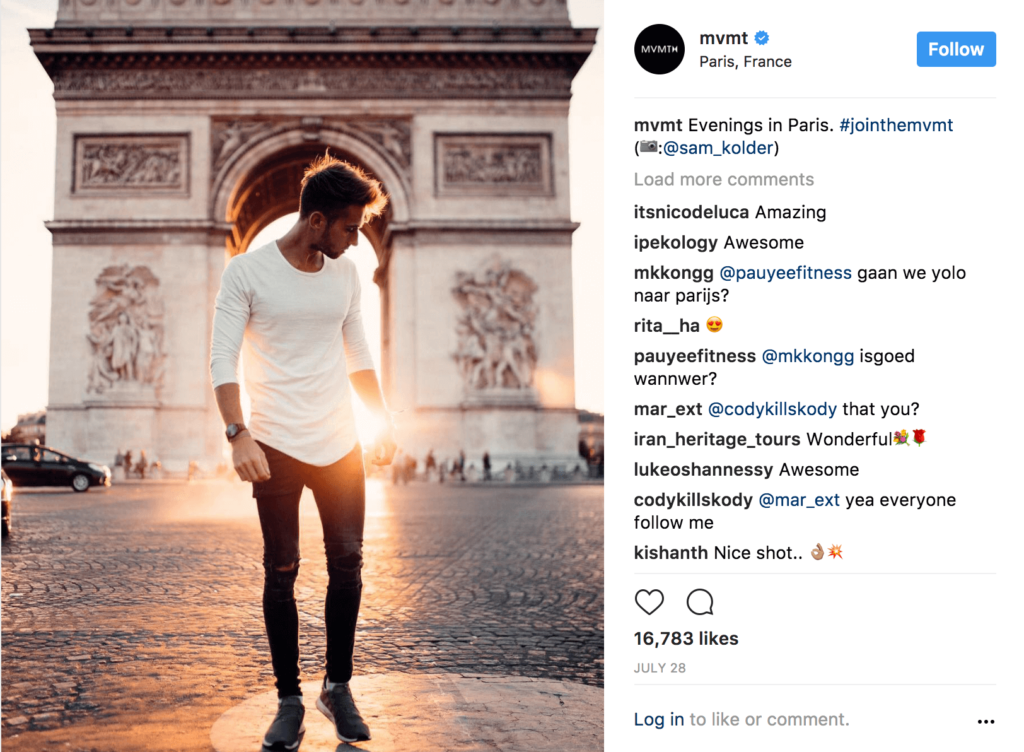The customer’s word is the strongest word in online marketing today. So naturally, mastering social commerce in 2018 will be all about creating a more engaging online shopping experience on social using your customer voice.
Social channels were designed originally for interaction, expression, and, most importantly, to create connections. Today’s most successful eCommerce brands are not seeking just to grab attention on social, but to join the conversation.
To understand the state of play, here are some stats that illustrate the power of social marketing today:
- As of the end of 2017, there are almost 1 billion active users on Instagram.
- 5% of the world’s overall referral traffic comes from Pinterest
- Facebook has more than 2 billion active users and maintains a near-monopoly over digital advertising.
Now that we are seeing an exponential rise in engagement across social networks, the arena has become increasingly difficult to navigate. In order to build brand loyalty and improve existing customer retention strategies, brands must identify new opportunities to isolate their market on social, creatively convert visitors into buyers, and dream up customer engagement strategies to implement after the initial purchase.
Why Social Commerce Trends Matter
When you look at recent social commerce trends, you can see the extent to which they impact the customer decision-making process. Take Shoppable Instagram for example, which gained momentum in 2017. Instagram transformed the product discovery experience and dramatically shortened the path to purchase as brands began creating Instagram shops rather than fighting to bring potential customers to their site. Suddenly, shoppers started pulling the trigger because they saw a post featuring featuring a product that looked cool in its “natural habitat.”
As online relationships become more personal and shoppers start connecting more directly with brands through content like Instagram posts, a major opportunity is arising for aspirational, smart branding to play a significant role in how customers feel about a brand. The key to doing this well lies in understanding shopper needs and the reasons why they use each social channel. The most successful businesses harness this understanding to evoke a genuine feeling of connectedness and closeness between buyer and brand as a strategy to increase sales through social commerce.
Your Social Commerce Toolkit for 2018
We’re here to help you go beyond simply establishing a meaningful presence on social channels, and to give you the techniques that will allow you to become social commerce leaders.
Here’s a run-down of the trends to stay on top of for this year:
1) Become an Insta-brand
With Instagram scaling to 800 million users at the end of 2017, it’s clear your customers have turned their attention to visual content.
Being visually driven, relatable, and authentically “on brand” is your break-through strategy to becoming a brand that explodes on Instagram.
Digital natives MVMT skyrocketed in Insta-popularity by maintaining their laser-sharp focus on their customers’ experience of their brand. MVMT swears by maintaining high standards when it comes to what they post on their Instagram home page, from unified color schemes to creating an overall curated appearance that shoppers readily identify with their brand. The content they collect from fans and influencers also fits seamlessly into their feed, thanks to the emphasis they place on their unique visual language. With a following near 1 million-strong — much of whom create and post content online — shoppers are likely to learn about MVMT on Instagram before ever visiting their site. And so an Instagram brand is born.

The best brands today are not striving just for numbers — they’re also after the engagement of customers who will propel their brand forward through word-of-mouth marketing. They understand that fewer engaged followers are worth more than a ton of passive ones. After all, engaged customers are most likely to identify with your brand and live your brand lifestyle.
Create aspirational images that your ideal customer base can relate to, and make sure your page gives your visitors an immediate feel for your brand.
2) Find your micro-influencers
Let’s all take a moment to applaud the fact that droves of online shoppers have moved beyond the hype of celebrity and onto a celebration of all things authentic.
*Applause*
In effect, celebrity advertising today is no different than branded advertising. Consumer behavior patterns demonstrate a clear preference for “real people” living “real lives” and doing “really cool things” than they do to another Kardashian-themed promotional post.
Cue the micro-influencer.
Considered by consumers to be more authentic than celebrities, micro-influencers are a rapidly growing Instagram trend for very good reason: they have more targeted audiences, high engagement rates, and are already living out your brand ideals. Think photographers, athletes, bohemian world-wanderers, even your everyday-person who is authentically channeling all things that speak to your brand.
Though they have fewer followers than the average celebrity account, the quality of micro-influencer audiences tends to be better, with a higher potential for like-minded tight-knit community of shoppers eager to take recommendations from one another.
When choosing micro-influencers, pick those that can contribute an authentic sense of your brand lifestyle to their audience. Try searching online communities that are relevant to your industry and see whose photos are already being reposted. Once you’ve selected them, create situations that will make your micro-influencers want to share their experience of your brand with their followers. Send them on trips to exciting destinations or relevant and exclusive industry events to generate great content for your brand.
Create long-lasting relationships by growing your micro-influencers beyond an Instagram marketing role. Offer them avenues for development such as blogging or curating product collections to deepen their connection with your brand.
3) Pay more attention to Pinterest
You may have veered away from Pinterest in the past or assumed that it isn’t a worthwhile channel for your industry. But, as the fastest-growing social network today, Pinterest is becoming a dominating force in the social commerce world and certainly a place where all brands should be.
Pinterest is seen by eCommerce experts as the next frontier of search engines. It’s more than just a place to collect craft ideas; rather it’s marketing machine, where everything is Pinnable, collectable, and purchasable. Brands that are on their game today know how to leverage Pinterest for its context-based search functionality, creating a smooth, relevant product discovery experience.
With 88% of people who save pins doing so in search of a purchase, missing out on this opportunity would mean losing some of the highest intent social traffic out there.
Take Pinterest’s visual product discovery capabilities to the next level by including customer photos on your boards to increase traffic to your site by up to 50%.
You can also take the best things about Pinterest and integrate them into the user experience of your own site. Make images searchable, pinnable, and shoppable, and showcase a variety of products that fit under a given theme in customer photo galleries.
4) Use customer-created Facebook ads
If in the past the best ads were the ones that stood out, then the best way to stand out today is by blending in.
Create ads that are a seamless fit in your customers’ newsfeeds, so they get more screen time during a mid-afternoon Facebook peruse than your typical branded advertisement. The trick is to look as native to their feed as possible. You can do this using your customer reviews and photos in place of professional ad creative.
By using customer content in your Facebook ad campaigns, you are showing potential customers people just like them enjoying your products. Not only that, but this strategy also makes your ads simple, relatable, and completely scalable.
Blenders Eyewear uses this tactic to retarget visitors to their site by pairing the product they had been browsing with just the right review from a previous buyer to motivate shoppers to complete the purchase. Using customer reviews Facebook Dynamic Product Ads, Blenders saw a 38% drop in cost per acquisition and twice the click-through rate.

Get that viral touch and boost your overall marketing efforts by featuring only Instagram-worthy customer photos alongside the reviews in your ads. This frees up your in-house creative for bigger, higher-stakes projects.
Top Takeaways
Social commerce is the brave new world of online shopping and we believe, with the right tools, you can not only join the conversation, but master it.
Make sure you use 2018 to:
- Establish a killer brand community on Instagram
- Leverage the right micro-influencers for your brand
- Take advantage of product discovery on Pinterest
- Use customer content to create powerful ads




